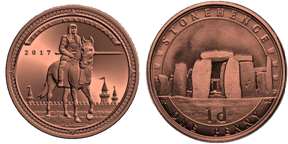Ordinarily a fairly common Colonial era note, but curiously whilst things were becoming tumultuous, notice that George III's name is still noted on this banknote issued by New Jersey. This is a reflection of the fact that during this early period in the American Revolution many in what would become the United States still hoped for greater autonomy and not outright independence from Great Britain.
But because of one of the signers of this note, notably the second signature in the middle of the signature area, John Hart, this note becomes extraordinary, John Hart would go on 3.5 months later to endeavour to sign the Declaration of Independence, a resolution which reflected quickly changing opinion regarding the relationship with Great Britain and a realisation that the relationship had in fact been severed.
Signers of these notes were usually better known people in the community, people of high regard, and occasionally, as in this example they went on to sign momentous documents which would change history.


